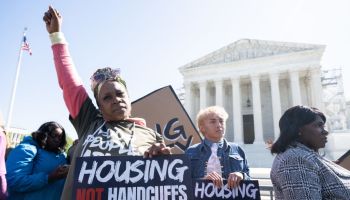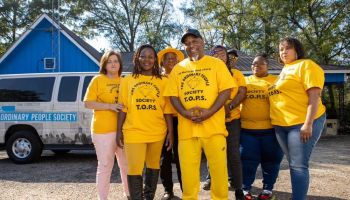As the world comes together for World AIDS Day on Saturday, it will be far more educated about the disease than when the global event first began on Dec. 1, 1988.
When the public first became aware of AIDS in the 1980s, it was essentially a death sentence and those who had it were treated cruelly. Perhaps the first famous case of how cruelly people with HIV/AIDS were treated is that of Ryan White, a 14-year-old HIV-positive high student from Indiana. White was infected with the disease through a blood transfusion during his birth in 1971.
It was only in 1984 when he became ill from pneumonia that he was diagnosed with AIDS. His case became widely known and attracted intense media attention–and fear. He was barred from attending class for a full year and was only allowed back after intense legal proceedings that it their way up to the Indiana State Supreme Court. When he did return, he had few friends and was forced to use disposable silverware. When his mother went grocery shopping, cashiers threw her change on the counter to avoid touching her hands, according to an account by the New York Times. He died in 1990 at the age of 18.
To date, more than 30 million people have died from AIDS and some 34 million are currently infected with HIV, the virus the causes AIDS. People of African descent make up the highest percentages of those who are living with the disease.
Today marks a globally united effort to further educate each other on how we can work towards a day when no one is infected with the disease. NewsOne will do its part by providing some information on how World AIDS Day began as well as some statistics on how HIV/AIDS is impacting the Black community.
Equally important, we have provided links to resources that people can go to for support.
1) What is World AIDS Day?
According to WorldAIDSDay.org, the day began as a way to help educate people via media, public events and other means on HIV/AIDS. It is also designed to commemorate those who have died from HIV/AIDS and to support those who are living with it. The day was conceived by James W. Bunn and Thomas Netter, two public information officers for the Global Programme on AIDS in Switzerland. Wikipedia provides insight on why Dec. 1 was chosen:
Bunn, a broadcast journalist on a leave-of-absence from his reporting duties at KPIX-TV in San Francisco, recommended the date of 1 December believing it would maximize coverage by western news media. Since 1988 was an election year in the U.S., Bunn suggested that media outlets would be weary of their post-election coverage and eager to find a fresh story to cover. Bunn and Netter determined that 1 December was long enough after the election and soon enough before the Christmas holidays that it was, in effect, a dead spot in the news calendar and thus perfect timing for World AIDS Day.
This year marks the 24th World AIDS Day. [SOURCE: Wikipedia]
2) How many people in Africa have died from HIV/AIDS?
According to the World Health Organization, an arm of the United Nations, more than 1.2 million people on the continent of Africa have died from HIV-related illnesses in 2010. Africa made up 69 percent of the 1.8 million worldwide deaths that occurred that year.
3) How many African Americans are infected with HIV/AIDS and how many have died from it?
More than 230,00 African Americans have died from HIV/AIDS and more than half of those infected with HIV today are Black. [SOURCE: AVERT]
4) If I have HIV or want to support someone who has it, where can I go for help?
The Center for Disease Control provides a number of resources that are culturally sensitive to African Americans living with HIV. Per the CDC, these include:
- WILLOW, which emphasizes gender pride among HIV-positive African American women, informs them how to identify and maintain supportive social networks and healthy relationships, and learn coping strategies and safe sex communication skills;
- Sister to Sister and SIHLE provide culturally sensitive health information to empower and educate African American women and adolescent females;
- Nia educates African American heterosexual men about HIV/AIDS and its effect on their communities and motivates risk-reduction behaviors by effective condom use;
- d-up: Defend Yourself!! and Many Men, Many Voices address social, cultural, and religious norms, promote condom use, and assist black MSM in recognizing and handling HIV risk-related racial and sexual bias. For information, visit www.effectiveinterventions.org.
You can also get information at the Black AIDS Institute and the National Black Leadership Commission On AIDS.
5) Who is the most notable African American living with full blown AIDS?
That title, perhaps, goes to Rae Lewis-Thornton, an Emmy award-winning AIDS activist out of Chicago. Diagnosed with HIV at age 23 during a routine blood drive visit in Washington, D.C., Lewis-Thornton has been living with full blown AIDS for more than 20 years. She actively discusses the challenges of taking her medication daily and her activism through her Twitter and Facebook accounts. Lewis-Thornton was featured on the front page of Essence magazine in December of 1994.















